I have a certain electrical problem with me that I'm unable to figure it out. I need to pass 10 A current through a 2.3 Ω nichrome wire to heat it up using a 4.2V Li-ion battery with a 70-150 C discharge rate. I currently have the following MOSFETs with me:
IRLB8721 (NMOS)
IRF9530 (PMOS)
IRF9640 (PMOS)
IRF9540 (PMOS)
The circuit I'm trying to emulate with a current source (and working) is attached.
 10 A current source with an NMOS acting as a switch
10 A current source with an NMOS acting as a switch
I tried many approaches like using a current mirror to pass the 10 A through the load, or simply replacing the current source with a PMOS to bias it at 10 A and allow it to pass through the load (all of these simulations are done in LTspice) and none of these approaches seems to work.
Also my concern is that 10 A passing through 0.5 Ω resistance will need 23 V while I'm limited to a 4.2 V source.
How can this limitation be overcome? Through the use of current amplifiers or any other thing, and what would the circuit look like?
Edit: I made a mistake in calculating the actual resistance of nichrome wire. It's actually 0.5-0.8 Ω. The internal resistance of the meter was calculated to be around 2 Ω. Also the battery I'm using is from this website.
I also tried a boost converter that I had lying around. I calculated the open-circuit voltage to be around 12 V and then when I used it as a power source, it immediately dropped to 5-6 V and was hardly drawing 1 A of current through the load of 0.5 Ω. I even bumped the open-circuit voltage up to 24 V and the result was still the same.
The objective is to heat the nichrome wire as fast as possible. I've used the 10 A current source from the power supply (the circuit I've already shown). The wire heats up fast with that. So all I'm trying to do is replace that current source with an equivalent circuit. Now I'm not sure exactly what I'm missing here or what I'm doing wrong here. I had the power supply giving me 10 A and 3.7 V.